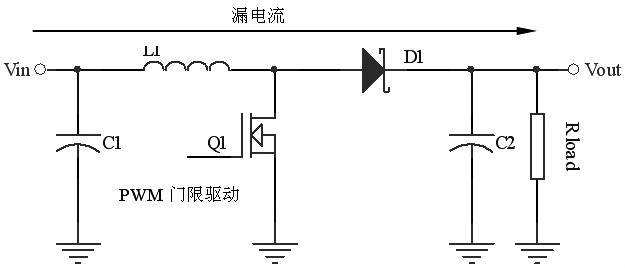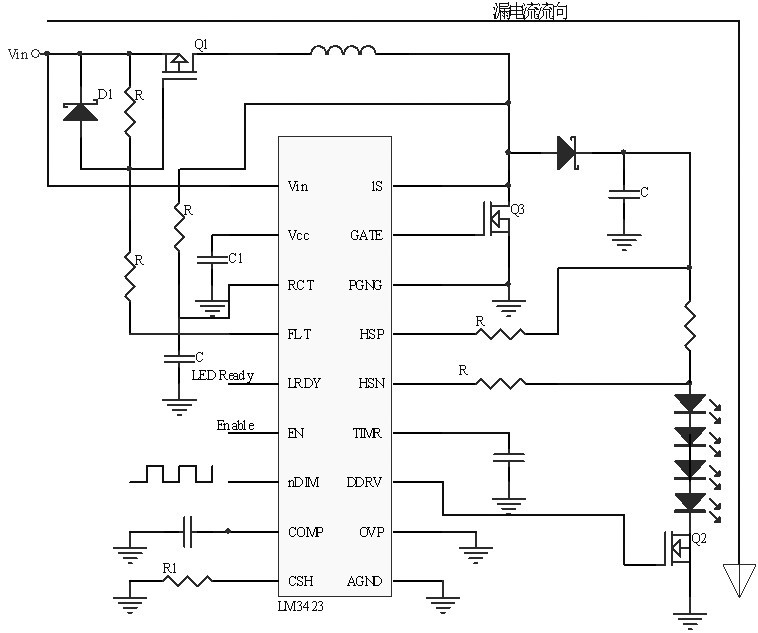Abstract: This paper analyzes the problems of the booster circuit for the characteristics of the traditional solar street lamp power system. It proposes to use NI LM3423 chip to design the boost LED driver to avoid any leakage current flowing into the LED lamp and provide a true short circuit for the LED. Protection function to improve boost efficiency and extend battery life.
I. Introduction
Solar energy is the most important energy source in green energy. It is an inexhaustible and inexhaustible source of natural energy. Its advantages are extremely rich, clean, safe, and inexpensive, and have no impact on the ecological balance. Solar LED street lights can not only use the clean and free solar energy and high-efficiency and environmentally friendly LEDs to bring lighting to the road, but also reduce greenhouse gas emissions and achieve green lighting. Using solar energy and LED light source to make various new solar street lamps, saving solar cell and battery capacity by 40%, light source life by 10 times, reliability by 5 times, and system cost by more than 40% compared with solar street lamps without LEDs. At the same time, it also solves the shortcomings of the conventional solar street lamp system that the AC inverter is unreliable, the low temperature start is difficult, and the system cost is high. [1] The problem with the traditional solar street lamp driver is that the battery life is short, and the boost converter does not have any protection device to prevent the occurrence of a short circuit. An input fuse must be added to provide protection against short circuit. Using NI's LM3423 chip, the solar LED street light driver for 12/24V battery input is designed to solve the problems of the traditional method. Improve social and economic benefits.
Second, the problem of the traditional boost driver
1. Power system structure of solar LED street lamp

Figure 1 Solar street light power system structure
The structure of the solar LED street light is shown in Figure 1. When the solar panel is illuminated by sunlight, its internal PN junction will form a new electron-hole pair, and a DC current will be generated in one loop. This current flows into the controller and will charge the battery in some way. The battery will be charged during the day and energy will be supplied to the LED at night.
The solar street light adopts a boosting mode, which can reduce the number of LED drivers in the system and save system cost. The boosting structure makes the number of LEDs connected in series no longer limited by the withstand voltage of the IC, but is determined by the MOS, so that more LEDs can be connected in series. Since most of the solar cells have low output voltages, the solar street lamps are more Suitable for use with boost structures.
The current mode constant current design allows the output current to be unaffected by input voltage variations, allowing the street lights to maintain the same brightness when the battery is fully loaded and out of power.
2. Problems with traditional boost drivers

Figure 2 Traditional boost drive circuit
(1) Short battery life: In Figure 2, even if the boost converter main switch is turned off, a current leakage path will be formed between Vin and Vout. If any load is connected to the output terminal, the leakage current Ileak is close to Vin/Rload, then the presence of leakage current keeps the battery in operation, which will shorten the battery life.
(2) No short circuit protection device: In Figure 2, when the output terminal is short-circuited, the current passes through the inductor, rectifier and ground, only limited by the printed circuit board trace resistance, rectifier parasitic resistance and inductor DCR resistance, no other Any protection measures, even if the main switch is turned off, still have this problem. Therefore, an input fuse must be added to protect against short circuit.
Third, the design of LM3423 boost drive circuit for solar street lamps
1.LM3423 chip function introduction
National Semiconductor's LM3423 chip has an input voltage range of 4.5V to 75V and is suitable for a wide input voltage range; 50KHZ fast PWM dimming; internal reference voltage 50mV-1.25V; operating frequency up to 1MHZ; internal Drive capability 750mA, ultra-low current shutdown less than 2uA. Can be used to configure boost, floating buck, floating buck/boost, and low-side external MOSFET controllers in SEPIC topology [2]; use peak current mode controller Designed to adjust LED current with predictive off-time, the combination of peak current mode controller and predictive off-time design simplifies loop compensation design while providing inherent input voltage feedforward compensation; with control for external dimming FETs and systems The "Zero Current" off feature features an integrated driver; and has LED status output flags, fault flags, programmable fault timers, and logic pins to control the polarity of the dimming driver.
2. Avoid leakage current
The LM3423 is used to design the boost LED driver circuit as shown in Figure 3. In Figure 3, after the EN pin commands the boost converter to fail, the main switch, the nDIMFET pin and the FLT pin are turned off, and the current flowing from Vin approaches and zeros, effectively preventing any leakage current from flowing into the series. LED because the boost converter at this time has failed. Since the leakage current no longer exists, the battery can reach a full state when the machine is stopped, which can effectively extend the battery life.

Figure 3 LM3423 boost LED driver circuit
3. Provide LED short circuit protection
In Figure 3, if the series LED is connected to ground, a short circuit is formed, and the input P-FET (Q1 in Figure 3) driven by the FLT pin is turned off, making the input path open, thus eliminating the need for an external fuse. Easy to implement LED short circuit protection.
Fourth, the conclusion
Based on the National Semiconductor's LM3423 chip design, the solar LED street lamp driver can effectively extend battery life and provide reliable short-circuit protection measures. After testing, the boosting efficiency has also been greatly improved. With the universal application of solar energy, the continuous improvement of solar LED street lamps and the continuous improvement of cost performance, solar LEDs will be widely used in urban and rural road lighting systems to provide environmental and economic resources for the society.
references:
[1]. LM3423 datasheet http://+_2032206.html.
[2]. FLT datasheet http://+_329018.html.
Shenzhen Isource lighting Co., Ltd , https://www.isourceled.com